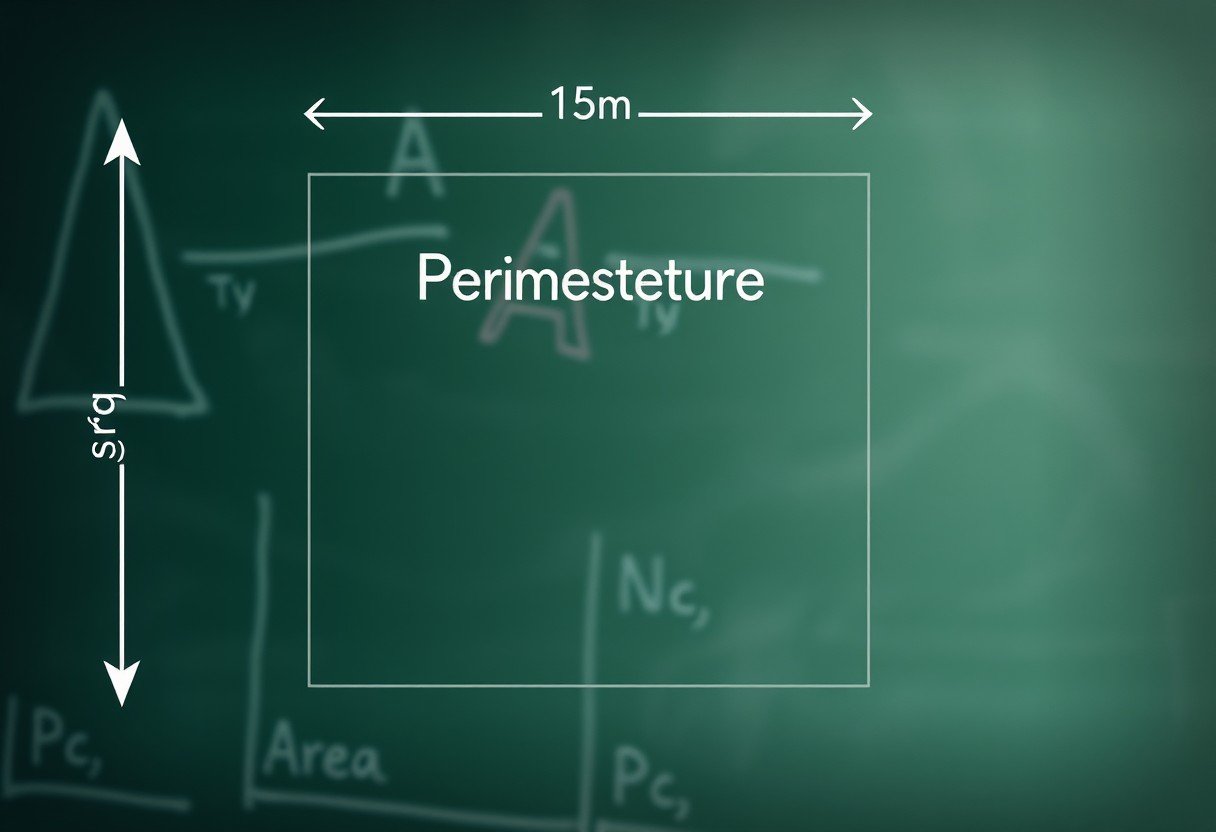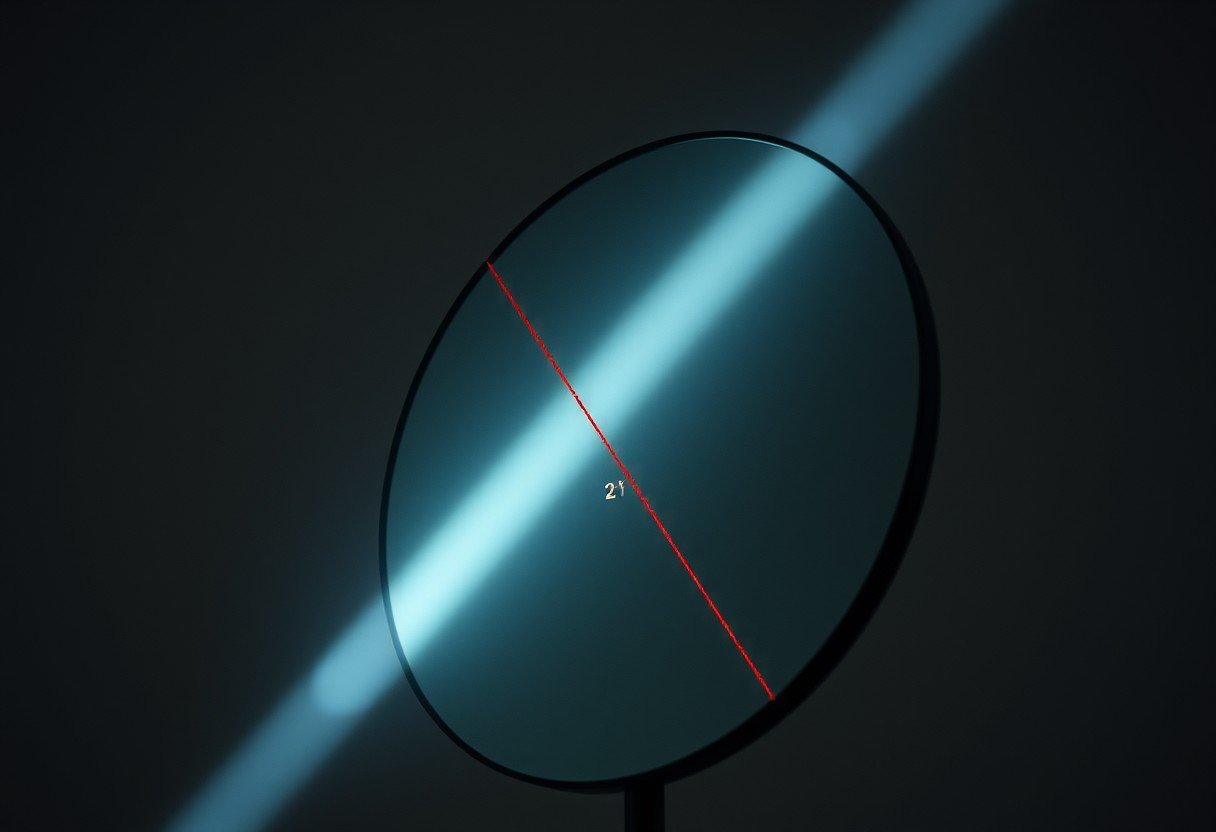Have you ever needed to find the area of a square but only knew its perimeter? It’s a common problem in fields from landscaping to home improvement. Luckily, a simple formula connects these two measurements. By understanding how to express the area of a square as a function of its perimeter, you can quickly solve these problems and sharpen your geometry skills. This guide will walk you through the entire process.
What are the Area and Perimeter of a Square?
Before connecting area and perimeter, it’s essential to understand what each measurement represents. They are fundamental properties of any two-dimensional shape, but they measure completely different things.
The perimeter is the total distance around the outside of the square. Since a square has four equal sides, you find the perimeter by adding the lengths of all four sides together. The formula for the perimeter (P) is P = 4s, where ‘s’ is the length of one side.
Area, on the other hand, measures the total space inside the boundaries of the square. It tells you how much surface the square covers. The formula for the area (a) is a = s², which means you multiply the side length by itself.
The First Step: Finding the Side Length from the Perimeter
The key to linking area and perimeter is the side length. Both formulas use the side length ‘s’, making it the bridge between them. If you know the perimeter, you can easily work backward to find the length of one side.
You start with the perimeter formula: P = 4s.
To find the side length (s), you need to isolate it in the equation. You can do this by dividing both sides of the equation by 4. This gives you a new formula: s = P/4. This simple rearrangement is the most critical step in the process.
For example, if a square has a perimeter of 20 inches, you can find its side length by calculating s = 20/4, which equals 5 inches. Now you have the information needed to find the area.
Deriving the Formula Step by Step
Once you know how to find the side length from the perimeter, you can combine the two formulas to create a new one that directly calculates the area from the perimeter. This process is called derivation, and it involves substituting one formula into another.
Here is a breakdown of the steps required to write the area as a function of the perimeter.
| Step | Description |
|---|---|
| 1 | Start with the two basic formulas: P = 4s (Perimeter) and a = s² (Area). |
| 2 | Rearrange the perimeter formula to solve for the side length (s). This gives you s = P/4. |
| 3 | Take the expression for ‘s’ from Step 2 and substitute it into the area formula. |
| 4 | The formula now looks like this: a = (P/4)². |
| 5 | Simplify the expression to get the final formula: a = P²/16. |
This final equation, a = P²/16, allows you to calculate the area of any square if you only know its perimeter, without needing to find the side length first.
Analyzing the Relationship Between Area and Perimeter
The formula a = (P/4)² reveals an interesting connection between a square’s area and perimeter. The relationship is quadratic, which means the area doesn’t just increase at the same rate as the perimeter; it increases much faster.
Consider what happens if you double the perimeter of a square. You might intuitively think the area would also double, but that’s not the case. Let’s say a square has a perimeter of 16 units. Its area would be (16/4)² = 4² = 16 square units.
If you double the perimeter to 32 units, the new area becomes (32/4)² = 8² = 64 square units. By doubling the perimeter, you actually increase the area by a factor of four. This exponential growth is a key concept in geometry and has major implications in design and construction, where small changes in boundary can lead to large changes in available space.
Why is this Formula Useful in the Real World?
This mathematical relationship isn’t just an academic exercise; it has numerous practical applications. Many real-world scenarios involve working with a fixed boundary or perimeter, making this formula incredibly useful for planning and resource management.
- Landscaping and Gardening: If a gardener has a certain amount of fencing (perimeter) to enclose a square garden plot, they can use this formula to instantly calculate the total planting area they will have.
- Construction and Flooring: When planning a square room, a contractor might know the total length of the walls (perimeter). This formula allows them to quickly determine the amount of flooring material needed to cover the area.
- Architecture and Design: Urban planners and architects use these principles to optimize space. Understanding how perimeter affects area helps in designing efficient buildings and public squares where land use is maximized.
By mastering this connection, you can make more informed decisions, save time on calculations, and manage materials more effectively in any project involving square shapes.
Common Mistakes to Avoid
When working with area and perimeter, it’s easy to get the concepts or their formulas mixed up. This often leads to incorrect calculations and flawed project planning. Being aware of common misunderstandings can help you avoid them.
The most frequent error is confusing the two measurements. Remember, perimeter is a length (measured in units like inches or meters), while area is a space (measured in square units like square inches or square meters). You cannot use the area formula to find the perimeter, or vice versa.
Another pitfall is forgetting to square the entire fraction (P/4) when using the derived formula. Some people mistakenly calculate P²/4 instead of P²/16, which produces a result four times larger than the correct area. Always remember to apply the square to both the P in the numerator and the 4 in the denominator.
Frequently Asked Questions
What is the formula to find the area of a square using its perimeter?
The formula to express the area (a) of a square as a function of its perimeter (P) is a(P) = (P/4)². This can also be written as a = P²/16. This allows you to directly calculate the area if you only know the perimeter.
How do you find the side of a square if you know the perimeter?
To find the length of one side (s) of a square from its perimeter (P), you use the formula s = P/4. Since a square has four equal sides, you simply divide the total perimeter by four.
If I have a perimeter of 40 feet, what is the area of the square?
First, find the side length: s = 40/4 = 10 feet. Then, calculate the area: a = s² = 10² = 100 square feet. Alternatively, you can use the direct formula: a = 40²/16 = 1600/16 = 100 square feet.
Is there a shape that has the maximum area for a given perimeter?
Yes, among all rectangles with the same perimeter, the square is the one that encloses the maximum possible area. This is a key principle in optimization problems in mathematics and engineering.









Leave a Comment